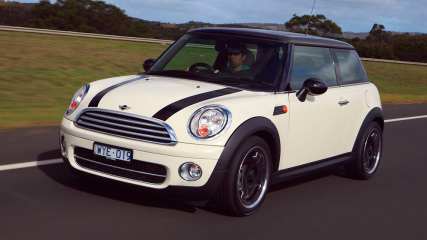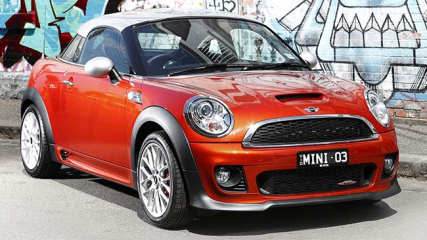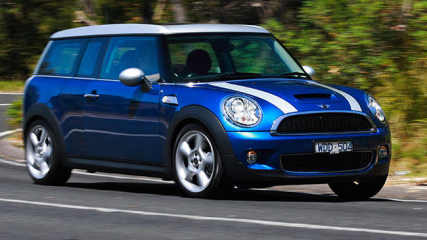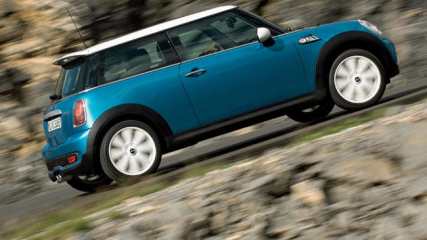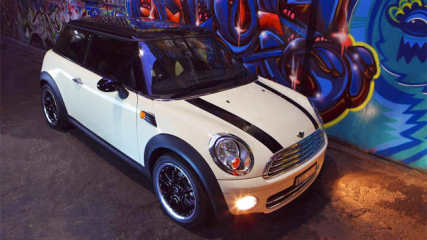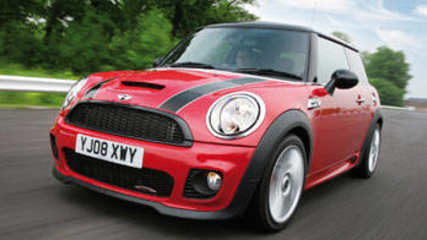Used Mini Cooper review: 2002-2011
By Ewan Kennedy · 09 Mar 2012
The new Mini, now owned by BMW, has been a huge success since its launch in Australia in March 2002.Partly because it’s a competent vehicle, but principally due to the fact that geniuses in the marketing have positioned it as a fashion item, not simply a car.As a result of Mini magazines, Facebook pages and numerous owners’ clubs, Minis have been customised in an extraordinary number of fascinating ways. Some of the prices paid are staggering, with the most expensive new Mini in Australia to date topping $100,000.Driving enjoyment is another factor in the car’s success. As a dynamic automotive for the keen driver the BMW Mini is close to perfect. The new Mini has steering that's almost kart-like in its response, in fact it’s almost too quick and first time drivers can get taken by surprise at times.The suspension assists the tyres to grip the road like grim death and the big disc brakes stop hard and straight.On the downside, the ride is fairly harsh and may prove too much for some occupants when it’s cruising on rough Aussie bush roads. The two top versions of the Mini are sold in Australia – the lower cost model, the Mini One, isn’t imported.The Cooper S is the hotshot, having its 1.6-litre engine supercharged prior to the introduction of the new model in March 2007, and turbocharged from then onwards.We really like the supercharged engine, because its torque comes in virtually instantly, whereas the turbo unit inevitably has a slight lag before delivering its all.The supercharged engine has a glorious shriek when you get stuck into it, a sound that’s loved by keen drivers with memories of supercharged racing cars. Externally, you can pick the Cooper S by the bonnet slot for the turbocharger’s intercooler, its chromed side grilles and fuel-filler cap, a small wing protruding from the rear of the roof, twin exhausts and larger (16-inch) alloy wheels.Sports seats have the option of full-leather or cloth/leather, the latter probably the better bet for hot Australian conditions. The steering wheel and gear lever knob are finished in leather and there are aluminium door sill plates carrying Mini Cooper S logos.A Mini cabriolet was launched late in 2004 and has an excellent opening roof system. Not only can it be used to make the Mini an open convertible, but also as a closed car with an open sunroof. The new cabriolet didn’t arrive in Australia until March 2009, two years after the launch of the Mark 2 coupe and it seems likely the two bodies will continue to be out of chronological order from now on.Topping out the Mini range is the Cooper S with the works – the John Cooper Works that is. The Cooper company specialises in improving Minis, both the original models and the new 21st century machines.Engine work on the new Mini is extensive and includes an Eaton supercharger in place of the Rootes unit fitted to the standard Mini Cooper S. Turbo engines in the later JCW’s rely on extra boost, with overboost on offer if you want to get really serious.Early in 2012 a coupe and roadster were added to the Mini range, it’s too early to comment on these as used cars. The new Mini network is well established in Australia. Almost all dealers are in suburban areas, which could lead to hassles if you’re unlucky enough to strike a problem in remote country.Being part of the BMW organisation gives the Mini major advantages in technical backup. Spare parts and servicing charges aren't unreasonable for a car in this class, meaning they are higher than for a typical small car. While it’s possible to do some of your own routine servicing, we suggest you stick with the professionals for all but the most minor tasks, and don’t even think of touching areas that can compromise safety.Most new Minis belong to doting owners and are serviced by the book. You will probably be happy to pay the extra asked for one of these pampered cars – it’s money well spent. Insurance costs are quite high, even more so for one of the ‘charged’ engines. Shop around for insurance, especially if you are young and/or inexperienced.But be sure to make direct comparisons between insurance companies and understand what you're getting – or not getting for your premium dollar.WHAT TO LOOK FORCheck for crash damage, or previous smash repairs. Mismatched paint colours from one panel to another are a good clue – do the inspection in strong light. Also look for ripples in the panels, most easily seen when viewed end on. Tiny drops of paint in unpainted areas like lights, windows and badges are another clue to a respray.Be very wary of a Mini that has been fanged during track days or at a drag strip. Look for a roll cage, lowered suspension and additional instruments. Keep in mind they may have been put back to standard before going on sale.Look over the interior for signs of damage or wear and tear. Don’t forget to check the boot.Check for signs of water stains in a cabriolet, ask to have the carpets removed to check the floor under them. Dry carpets may be new units, so don’t necessarily mean the car hasn't been caught in the rain...Make sure the engine starts easily and idles smoothly. Watch for a puff of smoke from the exhaust when it first kicks over and again when it’s accelerated hard during your road test. Make sure all gear changes are light, easy and quiet. The continuously variable transmission (CVT) fitted on early automatics has unusual sounds during its operation (engine sound, that is, the transmission should be quiet) if you haven’t driven one of these before it’s smart to call in an expert.CAR BUYING TIPWhen looking at any sporting car be sure to avoid one that’s been thrashed. A professional inspector is invaluable in providing advice.
